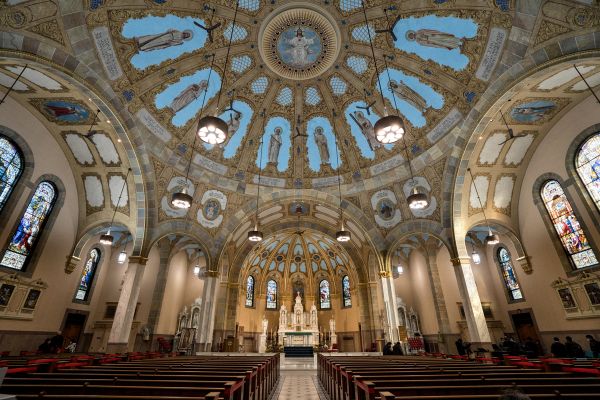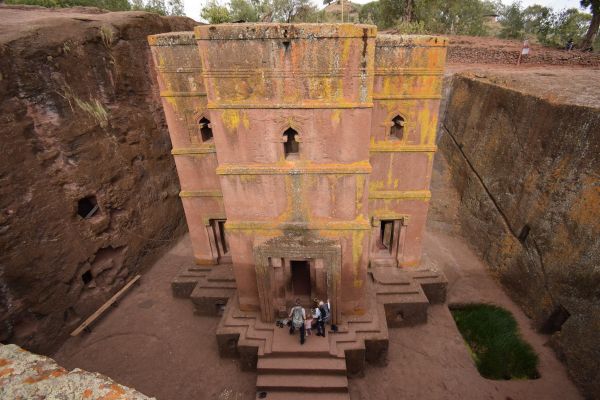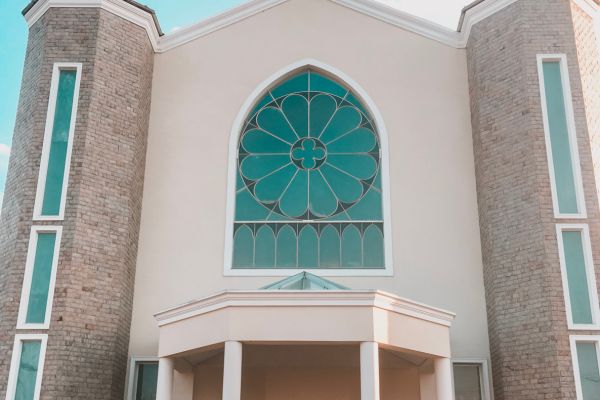Securing a loan for your church can be a crucial step in expanding your ministry, renovating your building, or undertaking new projects. However, the process of obtaining a church loan can be complex and requires thorough preparation. One of the most critical aspects of this process is gathering and organizing the necessary documents. This comprehensive guide will walk you through the essential documents needed for a church loan, helping you navigate the application process with confidence and increase your chances of approval.
Why Documentation Matters
Before diving into the specific documents required, it’s important to understand why lenders request such extensive documentation. Church loans are considered commercial loans, and lenders need to assess the church’s financial stability, management capabilities, and ability to repay the loan. Proper documentation allows lenders to:
- Evaluate the church’s financial health
- Assess the leadership’s ability to manage finances
- Understand the church’s history and growth potential
- Verify the church’s legal status and compliance with regulations
- Determine the church’s ability to repay the loan
By providing comprehensive and accurate documentation, you demonstrate your church’s creditworthiness and increase the likelihood of loan approval.
Essential Documents for a Church Loan
1. Financial Statements
Financial statements are arguably the most critical documents in your loan application package. They provide a clear picture of your church’s financial health and ability to manage funds. Lenders typically require the following financial statements:
a) Income Statement (Profit and Loss Statement)
- Shows the church’s revenues and expenses over a specific period
- Typically required for the past 3-5 years
- Should be prepared according to Generally Accepted Accounting Principles (GAAP)
b) Balance Sheet
- Provides a snapshot of the church’s assets, liabilities, and net worth
- Should be current within 60-90 days of the loan application
- Must include all church-owned properties and outstanding debts
c) Cash Flow Statement
- Demonstrates how cash moves in and out of the church
- Helps lenders assess the church’s ability to generate sufficient cash to repay the loan
- Should cover the same period as the income statement
d) Budget for the Current Year
- Shows the church’s financial planning and management capabilities
- Should include projected income and expenses
- Helps lenders understand how the loan payments will fit into the church’s overall financial picture
2. Tax Returns
While churches are generally tax-exempt, they may still need to file informational returns. Lenders typically request:
- Form 990 (if applicable) for the past 3 years
- Any other tax-related documents that demonstrate the church’s financial activities
3. Bank Statements
Recent bank statements provide lenders with insight into the church’s cash flow and financial management. Be prepared to submit:
- Bank statements for all accounts for the past 6-12 months
- Explanations for any unusual deposits or withdrawals
4. Giving Records
As tithes and offerings are often a significant source of income for churches, lenders will want to see:
- Detailed giving records for the past 3-5 years
- Analysis of giving trends
- Information on any major donors or capital campaigns
5. Attendance Records
Church attendance is often seen as an indicator of the church’s stability and growth potential. Provide:
- Attendance records for the past 3-5 years
- Analysis of attendance trends
- Information on seasonal fluctuations or special events that impact attendance
6. Legal Documents
To verify the church’s legal status and authority to enter into a loan agreement, you’ll need to submit:
- Articles of Incorporation
- Bylaws
- 501(c)(3) determination letter from the IRS
- State tax-exemption certificate
- Certificate of Good Standing from your state
7. Leadership Information
Lenders want to know about the people managing the church and its finances. Prepare:
- List of board members, trustees, and key staff members
- Resumes or bios of senior leadership
- Information on any recent leadership changes
8. Property Documentation
If the loan is for property purchase or involves using property as collateral, you’ll need:
- Property Appraisal
- Title report
- Environmental assessment
- Zoning verification
- Building plans and permits (for construction or renovation projects)
9. Insurance Documentation
Lenders want to ensure that the church’s assets are protected. Provide:
- Proof of property insurance
- Liability insurance certificates
- Any other relevant insurance policies
10. Debt Schedule
If the church has existing debts, prepare a detailed debt schedule including:
- All outstanding loans and lines of credit
- Payment amounts and frequencies
- Interest rates
- Maturity dates
11. Ministry Vision and Strategic Plan
While not strictly financial, these documents help lenders understand the church’s future direction:
- Mission statement
- Vision statement
- Strategic plan for the next 3-5 years
- How the loan fits into the church’s overall goals
12. Loan Request Details
Clearly outline the specifics of your loan request:
- Amount of loan requested
- Purpose of the loan
- Proposed repayment plan
- Any collateral being offered
13. Construction Documents (if applicable)
If the loan is for a construction or renovation project, you’ll need:
- Detailed project plans
- Cost estimates
- Construction timeline
- Contracts with architects and contractors
14. Denominational Information (if applicable)
If your church is part of a larger denomination, provide:
- Information on the denominational structure
- Any financial support or guarantees from the denomination
- Approval letters from denominational leadership (if required)
Preparing Your Documentation
Gathering and organizing these documents can be a time-consuming process. Here are some tips to help you prepare:
- Start early: Begin collecting documents as soon as you decide to apply for a loan.
- Be thorough: Ensure all documents are complete and accurate.
- Stay organized: Create a digital and physical filing system for easy access.
- Update regularly: Keep documents current, especially financial statements.
- Seek professional help: Consider working with an accountant or financial advisor to prepare financial documents.
- Be transparent: If there are any issues or discrepancies in your documents, address them upfront with explanations.
The Loan Application Process
Once you’ve gathered all necessary documents, the typical loan application process involves:
- Initial consultation with the lender
- Submission of loan application and supporting documents
- Lender’s review and analysis of the application
- Requests for additional information or clarification
- Loan committee review
- Loan approval or denial
- If approved, loan closing and fund disbursement
Conclusion
Securing a church loan requires thorough preparation and comprehensive documentation. By understanding the required documents and preparing them carefully, you can present a strong case for your church’s loan application. Remember that each lender may have slightly different requirements, so always confirm the specific needs with your chosen financial institution.
A well-prepared loan application package demonstrates your church’s financial responsibility, stability, and potential for growth. It not only increases your chances of loan approval but also may help you secure more favorable terms. With careful planning and attention to detail, you can navigate the church loan process successfully and take an important step toward achieving your ministry’s goals.
Frequently Asked Questions
Q1: How long does the church loan application process typically take?
A: The timeline can vary depending on the lender and the complexity of your application, but generally, you can expect the process to take anywhere from 4 to 12 weeks. Simple loan requests may be processed more quickly, while larger or more complex loans may take longer.
Q2: Do we need to provide personal guarantees for a church loan?
A: This depends on the lender and the specifics of your loan request. Some lenders may require personal guarantees from church leaders or board members, especially for newer churches or larger loan amounts. However, many established churches can secure loans without personal guarantees.
Q3: What if our church doesn’t have a long financial history?
A: Newer churches may face more challenges in securing loans, but it’s not impossible. In these cases, lenders may place more emphasis on your strategic plan, leadership experience, and growth projections. You may also need to provide more detailed documentation of your current financial position and plans.
Q4: Can we apply for a church loan if we have existing debt?
A: Yes, having existing debt doesn’t automatically disqualify you from obtaining a new loan. However, you’ll need to demonstrate that your church can manage the additional debt responsibly. Be prepared to provide a detailed debt schedule and explain how the new loan fits into your overall financial picture.
Q5: What if our attendance or giving has declined recently?
A: Recent declines in attendance or giving may raise concerns for lenders, but they’re not necessarily deal-breakers. Be prepared to explain any downward trends and provide context. If you have a plan to address these issues, include that information in your loan application package.
Q6: Do we need to have our financial statements audited?
A: While audited financial statements are ideal, many lenders will accept reviewed or compiled financial statements, especially for smaller churches or loan amounts. However, having audited financials can strengthen your application and may help you secure better loan terms.
Q7: How much detail do we need to provide about our church leadership?
A: Lenders typically want to see information about key leadership positions, including pastoral staff and board members. Provide brief bios or resumes highlighting relevant experience, especially in financial management or business leadership. You should also be prepared to explain any recent leadership changes.
Q8: What if we don’t have all the required documents?
A: If you’re missing certain documents, communicate with your lender about alternatives. In some cases, you may be able to provide substitute documentation or explanations. However, missing key financial documents could significantly delay or jeopardize your loan application.
Q9: How important is our church’s credit score?
A: Churches, as organizations, don’t have traditional credit scores like individuals do. However, lenders will look at your church’s credit history, including any past loans or lines of credit. They’ll also consider your payment history with vendors and utility companies. Maintaining a good financial track record is crucial.
Q10: Can we use projected income to qualify for a larger loan?
A: While lenders will consider your church’s growth potential and future plans, they typically base their decisions primarily on historical financial data. Projected income may be considered, but it usually won’t be the main factor in determining loan eligibility or amount.
Remember, each church’s situation is unique, and lenders may have different requirements or considerations. Always communicate openly with your potential lender throughout the application process to ensure you’re providing all necessary information.






